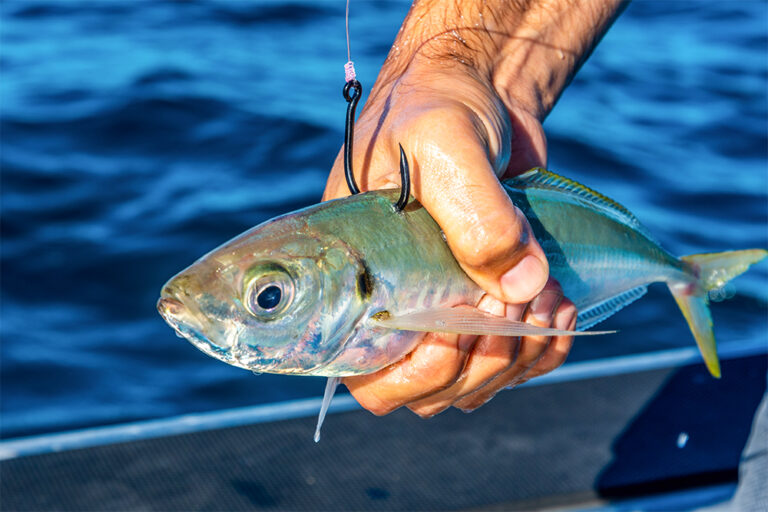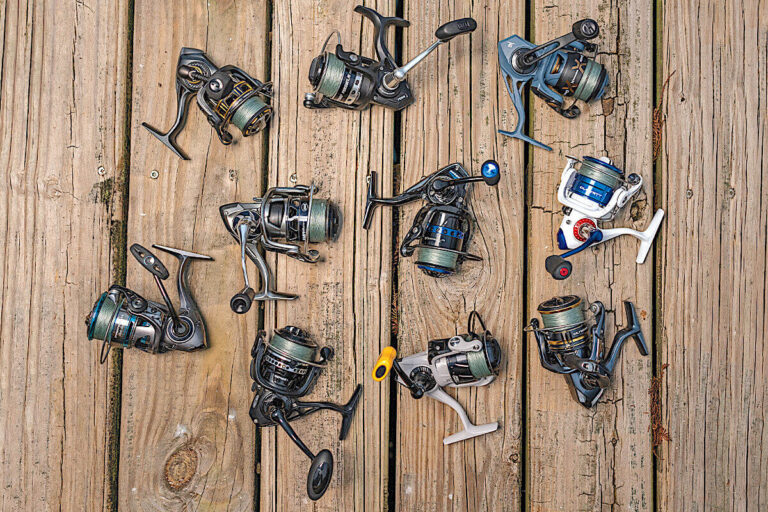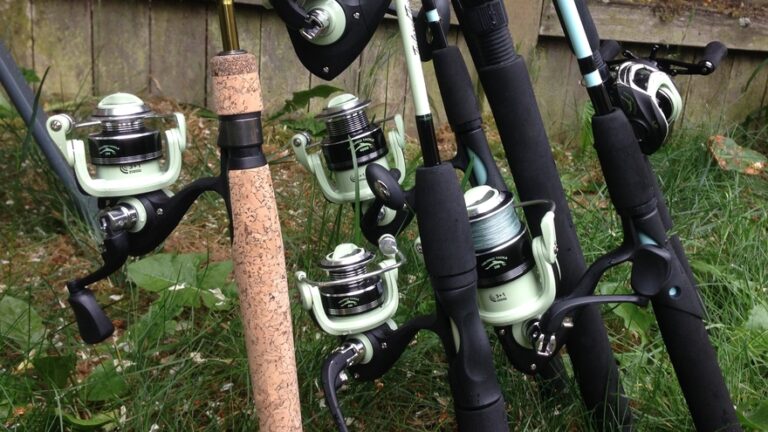To maintain a spinning reel, regularly clean it and lubricate the parts. This will ensure smooth operation and prolong the life of the reel.
A spinning reel is an essential tool for anglers, allowing them to cast their line and reel in fish efficiently. To keep it in optimal condition, proper maintenance is crucial. Regularly cleaning the reel with a soft cloth or brush, and removing any dirt or debris, will prevent damage to the components.
Additionally, lubricating the gears, handle, and drag system with a reel oil or grease will keep them functioning smoothly. Checking for any loose screws or parts, and tightening them if necessary, can prevent any potential issues. By following these simple steps, you can ensure that your spinning reel remains in top shape for many fishing trips to come.

Credit: www.amazon.com
Importance Of Regular Spinning Reel Maintenance
Understanding The Benefits Of Maintaining Your Spinning Reel
Maintaining your spinning reel regularly is crucial for its optimal performance and longevity. By taking the time to care for your reel, you can experience the following benefits:
- Smooth operation: Proper maintenance ensures a smooth reel operation, allowing for effortless casting and retrieval. A well-maintained spinning reel eliminates any jerking or sticking, providing a seamless fishing experience.
- Preventing corrosion: Exposure to water, dirt, and debris can lead to corrosion of the reel’s components. Regular maintenance, including cleaning and lubrication, prevents rust and corrosion, extending the lifespan of your spinning reel.
- Reducing wear and tear: Like any mechanical device, a spinning reel experiences wear and tear over time. Regular maintenance helps identify and address any issues before they worsen, reducing the risk of sudden failures and costly repairs.
- Preserving reel sensitivity: A spinning reel’s sensitivity plays a crucial role in detecting even the slightest nibbles from fish. Maintenance ensures that the reel’s sensitivity remains intact, enabling you to feel every touch and react promptly.
Prolonging The Lifespan Of Your Spinning Reel
Taking proactive steps to maintain your spinning reel can significantly extend its lifespan. Here’s why:
- Cleaning after every use: Saltwater, sand, and even freshwater can leave residue on your reel’s components. By carefully cleaning your reel after each use, you prevent the accumulation of dirt, minerals, and grime that can cause premature wear and damage.
- Lubrication for smooth performance: Regularly lubricating your spinning reel’s moving parts, including the gears, bearings, and handle, enhances its performance. Lubrication protects against friction, reducing heat and preventing premature wear.
- Inspection and replacement of parts: Perform routine inspections to identify any potential issues with your spinning reel. Case and line roller inspections, checking for loose screws, and examining the drag washers are essential steps to keep your reel in top shape. Replace any worn or damaged parts promptly to avoid further damage.
- Proper storage: Storing your spinning reel correctly when not in use is critical for its longevity. Avoid leaving it exposed to harsh elements or direct sunlight. Use reel covers and store it in a cool, dry place to protect it from damage.
Maintaining your spinning reel is not only a task that ensures optimal performance but also an investment in its long-term usability. By following regular maintenance routines, you can enjoy fishing with a reliable and responsive reel for years to come.
So, dedicate some time to care for your spinning reel, and reap the benefits on your next fishing adventure.
Step-By-Step Guide To Maintaining Your Spinning Reel
A spinning reel is a crucial tool for any angler, but like any mechanical device, it requires regular maintenance to ensure optimal performance and longevity. Keeping your spinning reel clean and properly lubricated will not only enhance its functionality but also prevent unnecessary wear and tear.
In this step-by-step guide, we will walk you through the process of maintaining your spinning reel, from cleaning and lubricating to inspecting and maintaining the drag system. Let’s dive in and learn how to keep your spinning reel in excellent condition for your next fishing adventure.
Cleaning Your Spinning Reel
Cleaning your spinning reel is an essential part of its maintenance routine. By removing dirt, debris, and old lubricants, you can prevent corrosion and ensure smooth operation. Here’s how to clean your spinning reel:
- Gather the necessary cleaning tools and materials: Soft-bristle brush, toothbrush, mild soap, warm water, clean cloth, and reel lubricant.
- Start by wetting the soft-bristle brush or toothbrush with warm water and applying a small amount of mild soap.
- Gently scrub the exterior parts of the spinning reel, including the body, handle, and bail arm, to remove any dirt or grime. Be careful not to apply excessive force that may damage the components.
- Rinse the reel thoroughly with warm water to remove any soap residue.
- Dry the reel using a clean cloth, ensuring all excess moisture is removed.
- After cleaning, apply a few drops of reel lubricant to the recommended areas as indicated in your reel’s manual.
Disassembling The Reel For Thorough Cleaning
Periodically disassembling your spinning reel allows for a more thorough cleaning, ensuring that all parts are free from debris and properly lubricated. Here’s how to disassemble your spinning reel:
- Refer to your reel’s manual to understand the disassembly process specific to your model.
- Carefully remove the reel handle, spool, bail arm, and other removable parts as instructed.
- Use a soft cloth or brush to remove any dirt or debris from the individual reel components.
- Inspect each part for signs of wear or damage, such as cracked or broken pieces. Replace any damaged components before reassembling.
- Clean all disassembled parts with warm water and mild soap, ensuring they are thoroughly rinsed and dried before reassembly.
Cleaning Individual Parts And Removing Dirt And Debris
To ensure optimal performance, individual parts of your spinning reel should be cleaned and inspected for any accumulated dirt or debris. Here’s how to clean individual parts:
- Clean the spool by gently wiping it with a clean cloth or brush to remove any dirt or line residue.
- Remove the side plate and clean the interior using a soft brush or cloth, paying close attention to any small crevices where dirt may accumulate.
- Inspect the bail arm for any dirt or debris and clean it using a soft cloth or brush.
- Clean the drag system by wiping it down with a clean cloth to remove any dirt or excess lubricant.
Lubricating The Reel For Smooth Operation
Proper lubrication is crucial for the smooth and efficient operation of your spinning reel. It helps reduce friction, prevent corrosion, and extend the lifespan of your reel. Here’s how to lubricate your spinning reel:
- Apply a recommended reel lubricant to the necessary areas, such as the main gear, bail arm pivot point, and handle knobs. Refer to your reel’s manual for specific lubrication points.
- Avoid over-lubricating, as this can attract dirt and debris, causing clogs and potential damage.
- Rotate the handle and spool to distribute the lubricant evenly across the internal components.
Properly Reassembling The Reel
After cleaning and lubricating your spinning reel, it’s crucial to reassemble it correctly to ensure proper functionality. Here’s how to properly reassemble your spinning reel:
- Refer to your reel’s manual for step-by-step instructions on reassembling the various components.
- Carefully align and secure each part, ensuring a snug fit without forcing any pieces.
- Double-check that all screws are tightened but not overly tightened.
- Test the reel’s functionality by rotating the handle and engaging the bail arm to ensure smooth operation.
Checking And Replacing The Line
The fishing line is an integral part of your spinning reel setup, and its condition can affect casting distance, sensitivity, and overall fishing experience. Here’s how to check and replace the line on your spinning reel:
- Evaluate the condition of your fishing line by examining it for signs of wear, such as fraying, discoloration, or abrasions.
- If the line shows significant wear or damage, it’s time to replace it for optimal performance.
- Ensure you choose the appropriate fishing line that matches your reel’s specifications and the type of fishing you’ll be doing.
- Properly spool the new line onto your reel, making sure it is evenly distributed and tightly wound.
Inspecting And Maintaining The Drag System
The drag system plays a vital role in controlling the amount of resistance your spinning reel applies to a running fish. Regular inspection and maintenance of the drag system are essential for its optimal functionality. Here’s how to inspect and maintain the drag system:
- Understand the importance of a properly functioning drag system in ensuring successful hooksets and preventing line breaks.
- Regularly check the drag system for signs of wear and tear, such as excessive friction or inconsistent drag pressure.
- Clean the drag system using a soft brush or cloth to remove any dirt or debris that may affect its performance.
- Lubricate the drag system as per the manufacturer’s recommendations, ensuring smooth operation and proper heat dissipation.
- Adjust the drag tension as needed for optimal performance, taking into account the species you are targeting and the fishing conditions.
Maintaining your spinning reel is vital to maximize its performance and durability. By following this step-by-step guide, you can ensure your spinning reel remains in top condition, providing you with seamless and successful fishing experiences for years to come. Remember, regular cleaning, lubrication, parts inspection, and line maintenance are key to the longevity of your spinning reel.
Tips For Long-Term Spinning Reel Care
Properly maintaining your spinning reel is essential for optimal performance and longevity. By following a few simple tips, you can ensure that your spinning reel stays in great condition for years to come.
Storing Your Spinning Reel Properly
- Store your spinning reel in a cool and dry place, away from direct sunlight.
- Keep the reel in a protective case or cover to prevent dust and debris from accumulating.
- Avoid storing the reel in areas prone to extreme temperature changes, such as a hot garage or freezing basement.
Choosing The Right Storage Location
- Select a storage location where your reel won’t be bumped or knocked over.
- Consider hanging your reel vertically on a rod rack or storing it in a tackle box with compartments specifically designed for reels.
- Make sure the storage area is secure and protected from potential damage.
Protecting Your Reel From Dust And Moisture
- Regularly wipe down your spinning reel with a soft cloth to remove any dirt or dust that may have accumulated.
- Avoid exposing your reel to water for prolonged periods of time, as it can cause corrosion and damage to internal components.
- Consider using a reel cover or storage box that offers protection against moisture and dust.
Avoiding Extreme Heat And Cold
- Extreme temperatures can cause damage to the materials and lubricants in your spinning reel.
- Avoid leaving your reel in a car on hot summer days or exposed to freezing temperatures during the winter.
- If you plan to fish in extreme conditions, choose a reel that is specifically designed to withstand those temperatures.
Regularly Servicing Your Spinning Reel
- Follow the manufacturer’s recommended maintenance schedule to ensure optimal performance.
- Clean the reel’s exterior and interior components regularly, removing any dirt or debris that may affect its function.
- Lubricate the moving parts with a reel-specific lubricant to reduce friction and prolong the reel’s lifespan.
Knowing When To Seek Professional Servicing
- If you notice any unusual sounds, grinding sensations, or a decrease in performance, it may be time to seek professional servicing.
- Professional reel repair shops have the expertise and tools to diagnose and fix any issues with your spinning reel.
- Don’t attempt to repair the reel yourself if you’re unsure of what needs to be done, as this may cause further damage.
Finding A Trusted Fishing Reel Repair Shop
- Research local fishing reel repair shops and read reviews to find a reputable and reliable location.
- Consider seeking recommendations from fellow anglers or fishing communities for trusted repair services.
- Choose a repair shop that specializes in spinning reels and has experience working with your specific reel brand.
Understanding Common Repairs And Maintenance Tasks
- Educate yourself on common spinning reel repairs and maintenance tasks to better understand your reel’s needs.
- Learn how to properly clean and lubricate the reel, replace worn-out or damaged parts, and adjust its settings.
- You can find tutorials, videos, or manuals from the reel manufacturer or online resources to help you with these tasks.
Preventing Common Spinning Reel Issues
- Handle your spinning reel with care, avoiding any abrupt or rough movements that can strain internal components.
- Regularly inspect the reel for any signs of wear, such as loose screws, damaged handles, or frayed lines.
- Take the time to properly maintain your reel, following the recommended maintenance guidelines to prevent avoidable issues.
Taking Precautions When Fishing In Saltwater Or Freshwater
- When fishing in saltwater, rinse your spinning reel with freshwater after each use to remove any salt and prevent corrosion.
- Use a reel-specific lubricant that is designed to withstand the corrosive effects of saltwater.
- In freshwater, periodically clean and lubricate your reel to prevent the buildup of dirt, algae, and other debris.
Properly Handling And Transporting Your Spinning Reel
- Always handle your spinning reel with clean hands to prevent transferring dirt or oils onto the reel’s surfaces.
- When transporting your reel, secure it in a protective case or cover to minimize the risk of damage during transit.
- Avoid placing heavy objects on top of the reel or stacking it with other fishing gear that may cause pressure or impact.
Maintaining your spinning reel doesn’t have to be complicated. By implementing these tips and regularly caring for your reel, you can ensure that it remains in top-notch condition, providing reliable performance every time you hit the water.
Final Thoughts On Maintaining Your Spinning Reel Effectively
Taking good care of your spinning reel is not just about ensuring its longevity; it also has a significant impact on your fishing experience. By prioritizing regular maintenance, you can reap a host of long-term benefits that make all the effort worthwhile.
Here are some key points to emphasize:
- Extended lifespan: Regular maintenance prevents premature wear and tear that can lead to costly repairs or the need for a new reel altogether.
- Smooth operation: A well-maintained spinning reel ensures smooth and effortless line retrieval, giving you a seamless fishing experience.
- Improved casting efficiency: Properly maintained reels offer better casting control, accuracy, and distance, enhancing your chances of landing that perfect catch.
- Reduced line twist: Maintenance routines such as lubrication can significantly reduce line twist, preventing tangles and frustrating knots during your fishing trips.
- Enhanced drag system: By cleaning and lubricating the drag mechanism, you can maintain optimal drag performance, ensuring more control over your hooked fish.
- Prevention of corrosion: Regular maintenance, including rinsing with freshwater after each use, helps prevent corrosion caused by saltwater or other environmental elements, preserving your reel’s functionality.
- Cost savings: By performing routine maintenance yourself instead of relying on professional services, you can save money in the long run while still enjoying the benefits of a well-maintained spinning reel.
Remember, a little effort goes a long way in maintaining the performance and durability of your spinning reel. Prioritize its care, and you’ll enjoy the rewards of a smooth-operating, efficient tool for your fishing adventures. So, set aside some time regularly to give your spinning reel the attention it deserves.
Happy fishing!
Conclusion
Maintaining a spinning reel is essential for ensuring its optimal performance and longevity. Regular cleaning and lubrication of the reel’s components is important in preventing rust and corrosion, while also reducing friction and improving overall functionality. Additionally, using the correct line and properly storing the reel after each use can help extend its lifespan.
It is also worth noting that learning how to properly adjust the drag system and handle the reel with care can prevent unnecessary wear and tear. By following these maintenance tips, anglers can enjoy smooth and efficient operations from their spinning reels for many fishing seasons to come.
Whether you are a seasoned angler or a beginner, taking the time to maintain your spinning reel will greatly enhance your fishing experience and increase your chances of landing that big catch.






